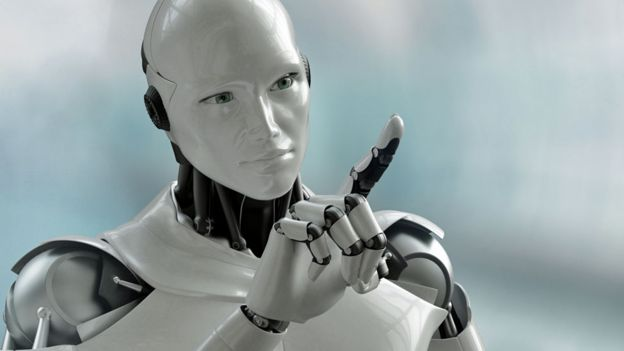Week 3: Robotics and Art
Blog #3
This week’s material seems extremely relevant in today’s cultural environment
surrounding robots and artificial intelligence. Personally, I feel that the concept
of artificial intelligence is somewhat exciting but mostly alarming, given the
speed of technological improvement only over the past century.


This week’s material seems extremely relevant in today’s cultural environment
surrounding robots and artificial intelligence. Personally, I feel that the concept
of artificial intelligence is somewhat exciting but mostly alarming, given the
speed of technological improvement only over the past century.
Image source: Seats2meet magazine
Although the advent of AI (artificial intelligence) could potentially bring human
civilization further towards the ease and convenience of the future, it could also
be quite dangerous if things go awry, as well as in a cultural sense, threatening
to the originality of artistic expression.
Image source: Robohub
In the words of Walter Benjamin, “The presence of the original
is the prerequisite to the concept of authenticity.” The discussion
around mechanical robots and their increasing abilities brings up
the concern that they may take away from creativity and originality.
If robots are able to create or reproduce works of art, does that
diminish the creative value of that work, because robots are not
human? Or is creativity not exclusively a human trait? Douglas
Davis seems to believe this to be true, as he states in his thesis,
“There is no longer a clear conceptual distinction between original
and reproduction in virtually any medium”.
One of my favorite robot-oriented movies that was also discussed
by Professor Vesna in lecture is Blade Runner. This movie features
the excitement of robot technology, as well as the threat. Detective
Richard Deckard is distracted during his fugitive hunt by, “a mystery
woman whose secrets may undermine his soul”. This woman is in
fact a cyborg, and the story unfolds in a captivating tug of war
between humans and robot intelligence. This artistic representation
of this modern theme is a perfect example of how people have
engaged with mechanization through both practical use and cultural
expression.
Image source: Warner Bros.
Sources:
Benjamin, Walter. “The Work of Art in the Age of Mechanical Reproduction.”
Reading Images, 2001, pp. 62–75., doi:10.1007/978-1-137-08886-4_7.
“Blade Runner.” Metacritic, Warner Bros. Pictures, 25 June 1982,
www.metacritic.com/movie/blade-runner.
Davis, Douglas. “The Work of Art in the Age of Digital Reproduction
(An Evolving Thesis: 1991-1995).” Leonardo, vol. 28, no. 5, 1995, p.
381., doi:10.2307/1576221.
Schuck, Dylan. “If You Can't Rewatch 'Blade Runner' Before '2049,' Read This.”
The Hollywood Reporter, 6 Oct. 2017,
Uconlineprogram. "Robotics pt1." YouTube. YouTube, 15 Apr. 2012. Web.
19 Apr. 2017. <https:// www.youtube.com/watch?v=cRw9_v6w0ew>.
I think we differ a bit in how we see the creation of robots. You mention robots may stifle creativity since creativity may be a human-only quality. However, I think the shear creation of a robot by humans would be the exercising of creativity. I always thought that the closer we got to making a robot do human-like things, the more we would be using our creative sides as scientists and engineers. I mean, it's absolutely amazing how we are able to do the simplest things as humans but struggle to mimic these same behaviors with something other than a human. In my perspective, every time we come closer to mimicking human behavior through robots, we compound the creativity we utilized previously. In this sense, creativity isn't just abstract and artistic, but perhaps just a novel way of thinking that can bring about new creations, like robots. Just my two cents.
ReplyDelete